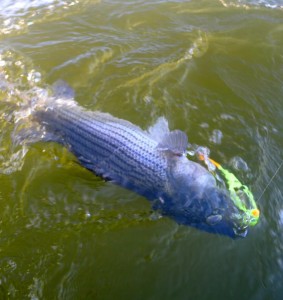 If it’s possible to do a book tour and never travel farther than 60 miles from home, I guess I’m smack in the middle of one. Keep an eye out for the Chesapeake Light Tackle bus. Here’s where we will be rolling to in the next week or so. I hope to see you at one or more of these great events.
If it’s possible to do a book tour and never travel farther than 60 miles from home, I guess I’m smack in the middle of one. Keep an eye out for the Chesapeake Light Tackle bus. Here’s where we will be rolling to in the next week or so. I hope to see you at one or more of these great events.
March 12 – Pasadena Sportfishing Group, Erleigh Heights Fire Hall, Severna Park, Maryland: The PSFG meets are usually the best attended of any club’s in Maryland. Over 100 anglers turned when I spoke there in 2010. I can’t wait to see all my friends at Erleigh Heights again.
March 13 – Northwest Chapter MSSA, Patapsco Council (No 1960) Knights of Columbus Hall at 1010 Frederick Road in Catonsville, MD 21228. Doors open (use side door) at 6:30 and meeting starts at 7:30. Admission to the meeting is free and visitors are welcome. This is my first time speaking to the Catonsville Chapter and I’m really looking forward to the meeting.
March 14 – Kent Narrows Chapter CCA, Fisherman’s Inn Restaurant, Grasonville, Maryland. This is my home chapter. I’ll hit the high spots in the Strike Triggers presentation, then we’ll discuss plans for our spring banquet. Don’t be afraid to invite the ladies to this meeting since we’ll need their help in making this event successful.
March 19 – CCA Patuxent River Chapter, Stoney’s Kingfisher Restaurant, Solomons Island, Maryland. The meeting starts at 7:00 PM but I plan to get there early enough to have dinner with some of the great fishermen from one of my favorite parts of the Chesapeake. Stoney’s is a great place to hang out even when we aren’t talking fishing, so come on out and join the fun!
April 5 – Carroll County MSSA Chapter, VFW Hall, 519 Poole Road, Westminster, Maryland. It will be great to see my buddies way up north in Carroll County again. This is one of my favorite groups and I’m looking forward to catching up with everyone again. I’ll get there early enough to share a few cold drinks at the bar so come on out and let’s talk fishing!
The subject of these talks will be Strike Triggers, but I’ll also have updated fishing reports. Don’t stay away if you’ve seen the presentation already because I am updating the information daily. There’s another event or two in the works and I’m hoping to make it to a few flea markets and fishing shows as well. I’ll have books available at all events. Here’s to running into you at one of these events, or better yet, out on the water!
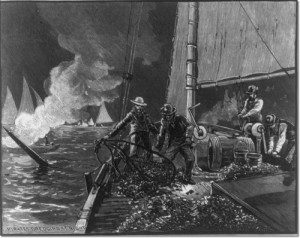 This is just a short response to an article in the Sunday edition of the Annapolis Capital. I’ll preface by saying that I consider the writer, Captain Chris Dollar, a friend. I also know him to be an excellent fisherman. I was just speaking to a fishing buddy yesterday about how excited I am that he has opened a new kayak and biking store near Kent Narrows. A genuine nice guy, I wish him the best in everything he does and I encourage everyone to stop by his new store. The following is my letter to the editor of the Annapolis Capital in response to his disagreement with my recent ChesapeakeLightTackle.com entry about wild-caught Chesapeake oysters. That entry has now received over 15,000 individual page views:
This is just a short response to an article in the Sunday edition of the Annapolis Capital. I’ll preface by saying that I consider the writer, Captain Chris Dollar, a friend. I also know him to be an excellent fisherman. I was just speaking to a fishing buddy yesterday about how excited I am that he has opened a new kayak and biking store near Kent Narrows. A genuine nice guy, I wish him the best in everything he does and I encourage everyone to stop by his new store. The following is my letter to the editor of the Annapolis Capital in response to his disagreement with my recent ChesapeakeLightTackle.com entry about wild-caught Chesapeake oysters. That entry has now received over 15,000 individual page views:
In his Outdoors column of March 4, 2012 Captain Chris Dollar writes in the Annapolis Capital:
(As a sidebar, I read a recent blog post in which the writer claimed people shouldn’t eat wild Chesapeake oysters because it’s bad for the bay. In all my conversations with experts over the years I’ve never heard that as a cause of what ails bay oysters.) Moreover, banning the catch of wild fish or oysters seems at odds with the state’s efforts to promote Maryland seafood. Catch local, eat local, right?
Dear Editor — Since Captain Dollar is speaking of my comments in my blog, Chesapeakelighttackle.com entry Jan 25, “Oysterholism,” I think it is only fair to point out that I am a big advocate for farm-raised Chesapeake oysters. I consider them to be among the best in the world, and encourage everyone to eat them. However, I believe Captain Dollar may be conversing with the wrong experts because,according to research published by the University of Maryland in 2011 in the journal Marine Ecology Progress Series (Vol. 436), “the oyster population in the upper Chesapeake Bay has been estimated to be 0.3% of population levels of early 1800s due to overfishing, disease, and habitat loss.” If discouraging the eating of the last 0.3% of wild-caught oysters is at odds with the state’s efforts to promote Maryland seafood, I suggest the state take another look at it’s policies. I don’t know about my good friend Captain Dollar, but I don’t want to be the one who eats the last wild-caught oyster from the Chesapeake Bay.
Respectfully, Shawn Kimbro Read More!
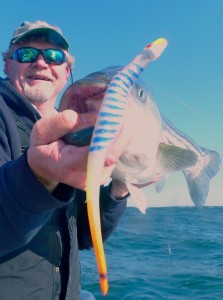 Along with sneaking in a couple of catch-and-release fishing trips, I’ve been reading all I can lately about why we catch fish with ease on some days, and why we cant buy a bite at other times. I can’t say I’ve solved that mystery, but I’ve included most of the knowledge I’ve gained in a PowerPoint slide show that I will present over the next couple of months to area fishing clubs. If you attended the Annapolis Saltwater Fishing Expo last weekend, you’ve already seen this show, but don’t be surprised if it morphs into a somewhat different format as I present it to different groups and organizations. I learn more every time I talk to fellow fishermen, pick up a book, read a magazine article, look at a website, and (especially) when I go fishing. Here’s a sneak preview of my Strike Triggers presentation:
Along with sneaking in a couple of catch-and-release fishing trips, I’ve been reading all I can lately about why we catch fish with ease on some days, and why we cant buy a bite at other times. I can’t say I’ve solved that mystery, but I’ve included most of the knowledge I’ve gained in a PowerPoint slide show that I will present over the next couple of months to area fishing clubs. If you attended the Annapolis Saltwater Fishing Expo last weekend, you’ve already seen this show, but don’t be surprised if it morphs into a somewhat different format as I present it to different groups and organizations. I learn more every time I talk to fellow fishermen, pick up a book, read a magazine article, look at a website, and (especially) when I go fishing. Here’s a sneak preview of my Strike Triggers presentation:
Have you noticed that some fishermen seem to steadily catch big fish and regularly have successful days even when others don’t? What are they doing differently? In my opinion, one trait of consistently productive fishermen is an appreciation for the concept of strike triggers. They may not always call it that, but you can pretty well bet that good fishermen are incorporating techniques in their lures and lure presentations that trick fish into biting even when they’re not particularly inclined to eat. It starts with a good understanding of the five reasons why striped bass attack a lure. Read More!
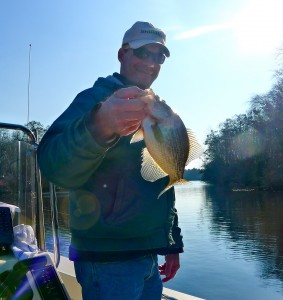 Most fishermen do their best to keep up with creel limits, size restrictions, slot ranges, and gear limitations. It’s often very complicated to follow specific regulations, but true sportsmen pride themselves on knowing exactly how they can legally fish and what kinds of fish they are allowed to keep. It’s especially important to know the rules this time of year, since many species are spawning. That’s why it’s so surprising that one of the most prized and delicious fish in the Chesapeake Bay is completely unrestricted – no limits, no size restrictions, and no rules as to how they can be caught.
Most fishermen do their best to keep up with creel limits, size restrictions, slot ranges, and gear limitations. It’s often very complicated to follow specific regulations, but true sportsmen pride themselves on knowing exactly how they can legally fish and what kinds of fish they are allowed to keep. It’s especially important to know the rules this time of year, since many species are spawning. That’s why it’s so surprising that one of the most prized and delicious fish in the Chesapeake Bay is completely unrestricted – no limits, no size restrictions, and no rules as to how they can be caught.
This past weekend I had the good fortune to fish for crappie with light tackle/fly-fishing guide Kevin Josenhans in the tidal Pocamoke River near Snow Hill, Maryland. As fishing guides go, Captain Kevin is nothing short of Chesapeake royalty. He’s been fishing the Bay for over 40 years. In addition to guiding for the past 20 years, he’s spent three decades working for the Maryland Department of Natural Resources including time as a ranger at Janes Island State Park. He knows the lower Maryland Chesapeake region like the back of his hand. His successful late summer speckled trout trips in the Tangier Sound are legendary. I’ve wanted to get out with him for one of those Tangier trips for several years, but I was surprised last week when my buddy Mark invited me along on a trip he had planned with Captain Kevin for crappie and chain pickerel. I jumped at the opportunity. Read More!
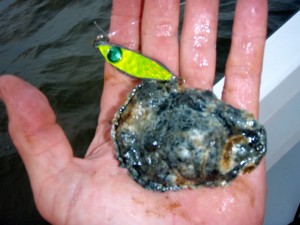 It’s not that hard, right? You just open your mouth, close your eyes, and throw it back. At least that’s how a lot of people eat oysters. I wonder if they really like them, or just the idea of eating them? I consider myself something of an oysterholic. There’s only so long I can go without eating some. I like them just about every way you can prepare them, but especially raw. I have several friends who are also oysterholics. Since our problem is more than we can handle, we’ve developed a twelve-step-program. Thank goodness they sell oysters by the dozen!
It’s not that hard, right? You just open your mouth, close your eyes, and throw it back. At least that’s how a lot of people eat oysters. I wonder if they really like them, or just the idea of eating them? I consider myself something of an oysterholic. There’s only so long I can go without eating some. I like them just about every way you can prepare them, but especially raw. I have several friends who are also oysterholics. Since our problem is more than we can handle, we’ve developed a twelve-step-program. Thank goodness they sell oysters by the dozen!
I remember the first oyster I ever tried. It was spring break of my freshman year in college. I visited a friend who lived on a boat along the Florida coast. We were broke and hungry so he showed me how to wade out and catch oysters from the Apalachicola Bay. We shucked them with a screwdriver and ate them on the spot. They were delicious. I’ve since refined my techniques for finding and eating oysters, but I’ll never forget the first time. Read More!
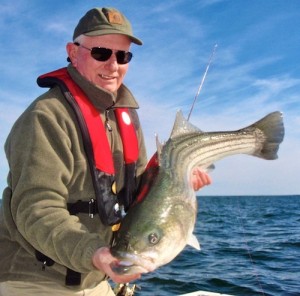 Last December, I caught up with my friend Gaylon Thompson at one of my light tackle seminars in Severna Park, Maryland. During the few minutes we had to talk, we wondered if we might be able to get in a fishing trip in early 2012. I was very excited when Rich Jenkins called me last week to say he and Gaylon were heading down to Virginia to fish in the ocean Monday, and I was invited. He also invited Jamie Clough. We’ve been hearing about the coastline bite for a while now from Wild Bill and other fishermen who follow the migration. Even though I’m turning up a few hard-to-catch but very big fish here in the Bay, we couldn’t resist giving it a go. Our first challenge was deciding whether to fish the Chesapeake Bay Bridge Tunnel, or the ocean. We called, emailed, and Facebooked everyone we could think of seeking advice. Some of our friends came though, especially “Hillbilly Boater” Jack, and a couple of Jamie’s buddies. I also got some good info from some of Tattoo Charlie’s buds on Facebook. Read More!
Last December, I caught up with my friend Gaylon Thompson at one of my light tackle seminars in Severna Park, Maryland. During the few minutes we had to talk, we wondered if we might be able to get in a fishing trip in early 2012. I was very excited when Rich Jenkins called me last week to say he and Gaylon were heading down to Virginia to fish in the ocean Monday, and I was invited. He also invited Jamie Clough. We’ve been hearing about the coastline bite for a while now from Wild Bill and other fishermen who follow the migration. Even though I’m turning up a few hard-to-catch but very big fish here in the Bay, we couldn’t resist giving it a go. Our first challenge was deciding whether to fish the Chesapeake Bay Bridge Tunnel, or the ocean. We called, emailed, and Facebooked everyone we could think of seeking advice. Some of our friends came though, especially “Hillbilly Boater” Jack, and a couple of Jamie’s buddies. I also got some good info from some of Tattoo Charlie’s buds on Facebook. Read More!


